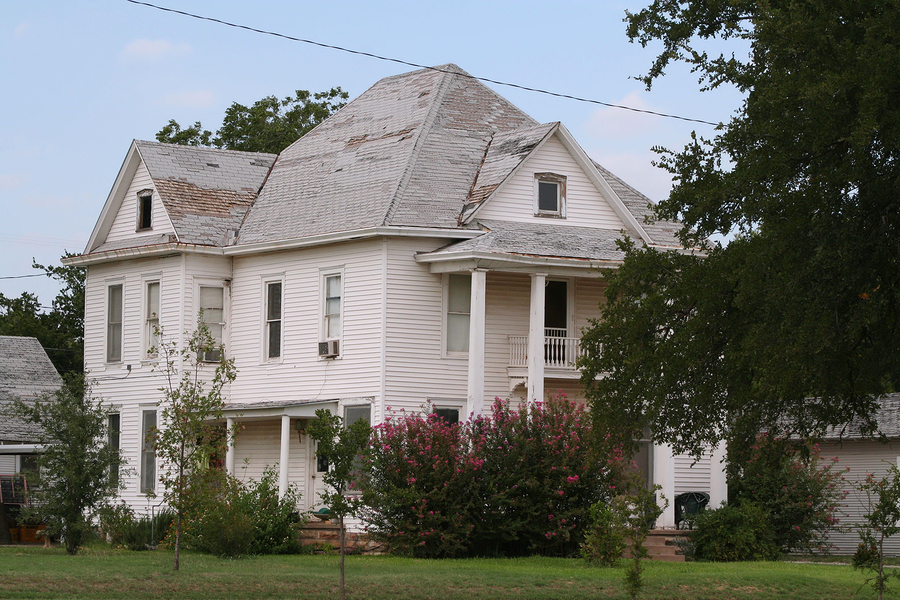How to spot defects and avoid a poor investment
If maintained correctly, an Australian home can remain standing, habitable and safe for centuries. However, as well all know, not everybody stays on top of maintenance, and some people try to sell their homes for more than they’re worth hoping defects will go unnoticed.
Building regulations and standard construction practices have changed significantly over the past few decades. For example, the use of asbestos was only officially banned in 2003, even though builders and architects stopped using it during the 1980s.
For the purposes of this article, we’ll call any home built 30 or more years ago ‘old.’ Look hard enough, and you’re bound to spot some of these common defects when viewing an older property.
- Foundation issues
Problematic foundations can compromise a property’s structural integrity. They might not necessarily cause a house to come crashing down, but they’ll certainly cost a significant sum to rectify. Uneven floors are a common sign that a home’s foundations need fixing, but less obvious signs include windows that won’t latch, plasterboard cracks and bulges in the exterior walls. If you notice any of those symptoms, hire an architect or a structural engineer to inspect a property before you buy it.
- Inadequate ventilation
Sometimes, homeowners are responsible for diminishing their property’s ventilation. They may try to ‘over-seal’ their house to bolster its insulation. Or, they may simply neglect to maintain their home’s ventilation system. Common signs that indicate inadequate ventilation is a problem include damp, persistent condensation on windows and timber rot. In severe cases, poor ventilation can lead to structural issues.
- Environmental hazards
Any home that was built prior to the 1980s could be riddled in environmental problems. For example, lead-based paint, formaldehyde (a respiratory irritant), and asbestos were all common construction materials just 40 years ago. These materials can cost thousands of dollars to remove. Worst of all, they can cause adverse health conditions. If you’re interested in buying a home that was built before the 1980s, have it inspected first.
- Leaking roof
Over time, water intrusion can lead to the demise of a property, and a poorly maintained roof often causes the problem. While we don’t recommend climbing onto the potentially problematic roof of an old property, there are signs you can spot from the ground that suggest something is wrong, such as cracked, curling and missing tiles. You might also notice a musty smell or signs of mould in the attic. In severe cases, you may see streaks or patches of damp on the walls.
- Poor drainage
50 years ago, homes were not built with nearly the same level of perimeter or underfloor drainage as they are today. Some homeowners may have updated their drainage, but there are countless homes across Australia that have insufficient drainage compared to today’s standards. Head down to the basement, and if you notice a musty smell, it’s likely emanating from mould, a problem commonly caused by poor drainage.
- Old windows
Compared to many Western countries, Australia seems to be late to catch onto the idea of installing double-glazed windows. Many people think double glazing is purposed to keep homes in colder regions warm, but double-glazed windows are just as effective at keeping the heat outdoors as they are keeping cool air inside. Double-glazed windows are becoming increasingly popular, but if you’re looking at a home that doesn’t have them, bear in mind you might need to pay thousands of dollars to install them.
- Dangerous electrics and plumbing
The wiring and plumbing in older homes may not comply with today’s safety standards. Unfortunately, identifying dangerous electrics and fixing plumbing problems aren’t straightforward without the help of a professional. Nevertheless, it’s worth paying for an inspection for the sake of your safety (and bills).
As you can see, older homes can be a poor investment, so you should either have them inspected by engineers and surveyors or simply start from scratch. Build a new home, and you don’t have to worry about any of the problems above arising in the near future – but don’t forget that even new homes still require routine maintenance.

